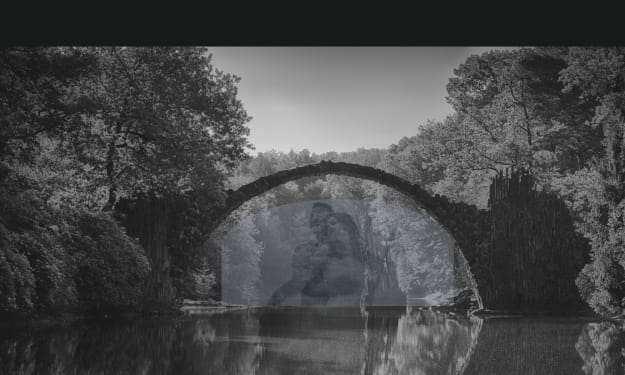
The lecture, that ubiquitous feature of classrooms across the globe, has a surprisingly long and fascinating history. Far from being a static method of information transmission, the lecture has evolved dramatically over time, reflecting the changing landscape of knowledge, technology, and pedagogical practices. This article delves into the origins of the lecture, exploring the practical limitations that birthed it and the evolving role it has played in education over centuries.
The Seed is Sown: Scarcity and Sharing in the Medieval University
The roots of the lecture can be traced back to the medieval university, a period marked by a scarcity of knowledge and limited access to written materials. Textbooks, if they existed at all, were often handwritten copies of ancient texts, painstakingly reproduced by scribes. Parchment, the primary writing material, was expensive and time-consuming to prepare.
In this environment, the lecture emerged as a practical solution for disseminating knowledge efficiently. A single scholar, often referred to as a "master," would act as the conduit, sharing their expertise with a large group of students. This format had several advantages. Firstly, it ensured a standardized transmission of knowledge. Everyone in the classroom received the same information, directly from the source, minimizing the risk of errors or distortions creeping in through multiple copies. Secondly, it allowed for a level of interpretation and elaboration beyond the limitations of the written text. The master could explain complex concepts, provide context, and answer questions that might arise during the reading.
The focus of these early lectures, unsurprisingly, was on memorization. Students diligently took notes, striving to capture the master's pronouncements for further study. This emphasis on rote learning stemmed from the scarcity of reference materials. Once a student absorbed the information presented in the lecture, it became their primary source of knowledge on the subject.
However, this system had its limitations. Student participation was minimal, with the lecture structured as a one-way transmission of information. Critical thinking was less emphasized compared to simply retaining the facts presented. Additionally, the reliance on a single source, the master's interpretation, could potentially limit exposure to diverse perspectives.
The Printing Press Revolution and the Rise of the Expert
The invention of the printing press in the 16th century marked a watershed moment for the lecture. With the ability to mass-produce books, knowledge became more readily available. This shift had a profound impact on the lecture format. Professors were no longer confined to simply reading existing texts. They could delve deeper, introduce their own interpretations and analyses, and present their unique perspectives on the subject matter.
This evolution ushered in the era of the expert lecture. Professors, now recognized as authorities in their respective fields, presented structured and informative talks on specific topics. This format, closer to what we recognize as the modern lecture, provided students with a deeper understanding of the subject while simultaneously fostering critical thinking skills. Lectures became platforms for debate and discussion, with students encouraged to engage with the material and challenge the presented ideas.
The rise of universities as centers of research further solidified the role of the expert lecture. With new discoveries and advancements constantly being made, lectures became a crucial means for disseminating cutting-edge knowledge to students. Professors could share the latest research findings, analyze their implications, and inspire students to pursue further exploration in their chosen fields.
The 20th Century and Beyond: Challenges and Adaptations
The 20th century saw a continued reliance on the lecture format, particularly with the rise of large universities and ever-expanding student populations. However, with the passage of time, criticisms of the traditional lecture style began to emerge.
Some critics argued that passive listening wasn't the most effective way to facilitate learning. They contended that students learn best by actively engaging with the material, participating in discussions, and applying their knowledge to solve problems. Additionally, the one-size-fits-all approach of traditional lectures was seen as inadequate for catering to diverse learning styles.
The explosion of information in the digital age further challenged the traditional role of the lecture. With readily available online resources, students could access vast amounts of information independently. The question arose: Was the lecture still the most efficient way to transmit knowledge?
In response to these critiques, educators began to explore new pedagogical approaches. Interactive lectures emerged, incorporating activities, discussions, and multimedia elements to engage students. The rise of blended learning models combined lectures with online resources, group projects, and hands-on activities to create a more well-rounded learning experience.
The Future of the Lecture: Evolution, Not Extinction
The Strengths and the Shift: Why Lectures Still Matter
While criticisms of the traditional lecture are valid, it's important to recognize the format's enduring strengths.
● Structured Introduction: Lectures can provide a solid foundation for understanding new and complex topics. By presenting a clear and organized overview, professors can help students grasp the key concepts and relationships within a subject area.
● Expert Insight: Lectures leverage the expertise of professors. They can offer unique interpretations, analyze current research, and connect seemingly disparate ideas in a cohesive way. This expert perspective can be invaluable for students, particularly in fields where critical thinking and analysis are paramount.
● Spark for Curiosity: A well-crafted lecture can be an engaging and inspiring experience. Professors who are passionate about their subjects can ignite curiosity and motivate students to delve deeper into the material on their own.
However, to remain relevant in the 21st century, the lecture needs to adapt. Here are some key considerations for the future:
● Interactive Engagement: The passive, one-way transmission model needs to be replaced with a more interactive approach. Techniques like in-lecture polls, clicker questions, and short group discussions can encourage active participation and enhance student understanding.
● Technology Integration: Technology can be a powerful tool for enriching lectures. Multimedia presentations, simulations, and online resources can be incorporated to cater to diverse learning styles and provide a more visually engaging experience.
● Flipped Classroom Approach: The flipped classroom model flips the traditional script. Students come to class prepared with foundational knowledge acquired through online resources or pre-recorded lectures. The classroom time then becomes focused on deeper analysis, problem-solving activities, and interactive discussions.
● Focus on Application: Lectures shouldn't just impart knowledge; they should equip students with the ability to apply that knowledge in real-world scenarios. Problem-solving exercises, case studies, and project-based learning can help students bridge the gap between theory and practice.
Conclusion: A Blended Future
The future of the lecture is not extinction, but rather evolution. By embracing new technologies, incorporating interactive elements, and focusing on fostering critical thinking skills, the lecture can remain a valuable tool in the educator's arsenal. The key lies in creating a blended learning environment that leverages the strengths of lectures with other pedagogical approaches, catering to the diverse needs of today's learners.
In this future, the lecture becomes a springboard for exploration, not a passive endpoint. It becomes a space for dialogue, debate, and the application of knowledge, empowering students to become active participants in their own learning journey.
About the Creator
aly rahman
no writing no life
Enjoyed the story? Support the Creator.
Subscribe for free to receive all their stories in your feed. You could also pledge your support or give them a one-off tip, letting them know you appreciate their work.






Comments
There are no comments for this story
Be the first to respond and start the conversation.